[ad_1]
Local architects Dmytro Volyk and Ksenia Donetska have completed the renovation of Uspenska Square in Dnipro, Ukraine, dividing multipurpose space with wave-like benches informed by the nearby river.
Volyk and Donetska were tasked with renovating the square in 2021, and sought to rekindle what they describe as having become a “transit area with no meaning”.
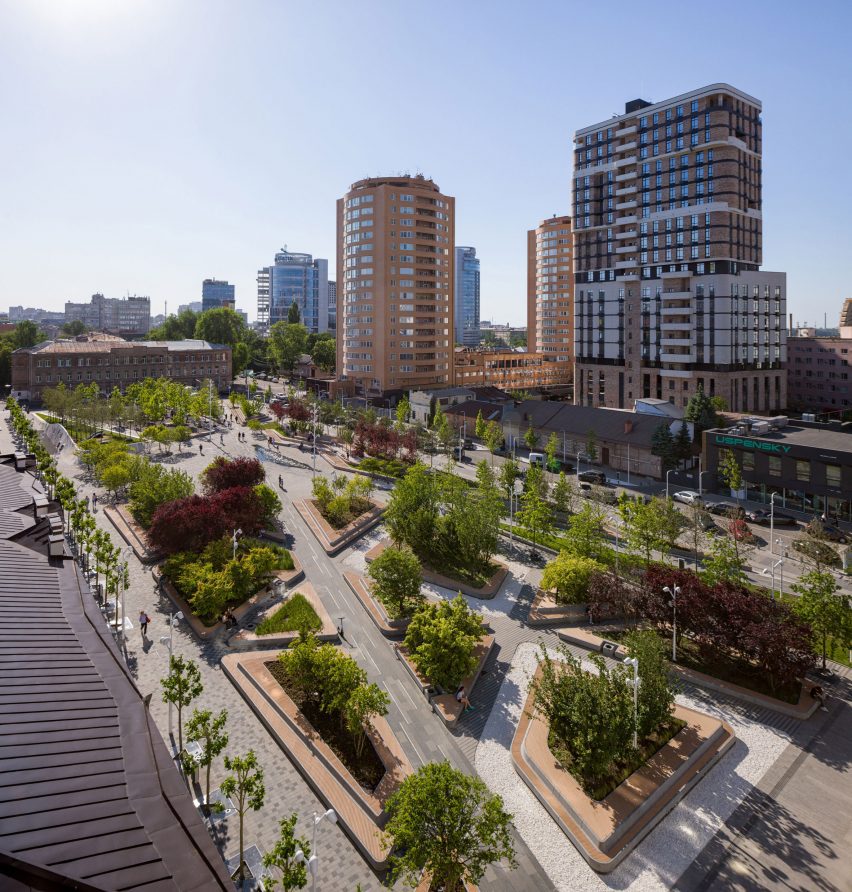
After delays to the project due to the invasion of Ukraine by Russia in February 2022, the square re-opened to the public at the end of 2023.
One of the oldest squares in the city, Uspenska Square was originally designed in the 19th century, and once sat at the centre of public life between the Assumption Cathedral to the west and the Dnipro river to the east.
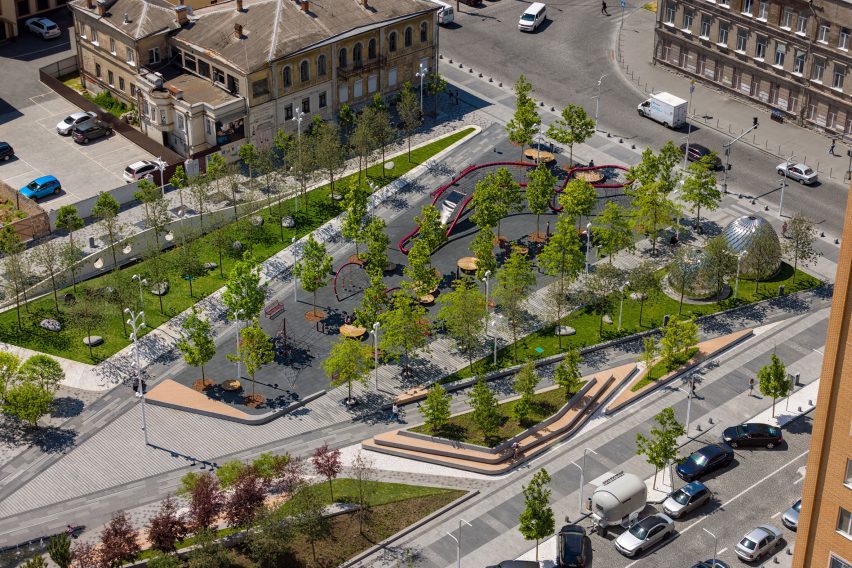
Over time, the square’s importance dwindled. After the original cathedral building burnt down and its replacement was closed during the Soviet era, the square became a neglected through-route between the city and the river.
“Our task as architects was to restore the historical significance of the square as part of the city’s pedestrian framework, to make it more humanistic and architecturally high-quality,” Donetska told Dezeen.
“The renovated Uspenska Square has become another impetus for the city life of Dnipro, showing that despite the war, people want to live at home, in Ukraine,” she continued.
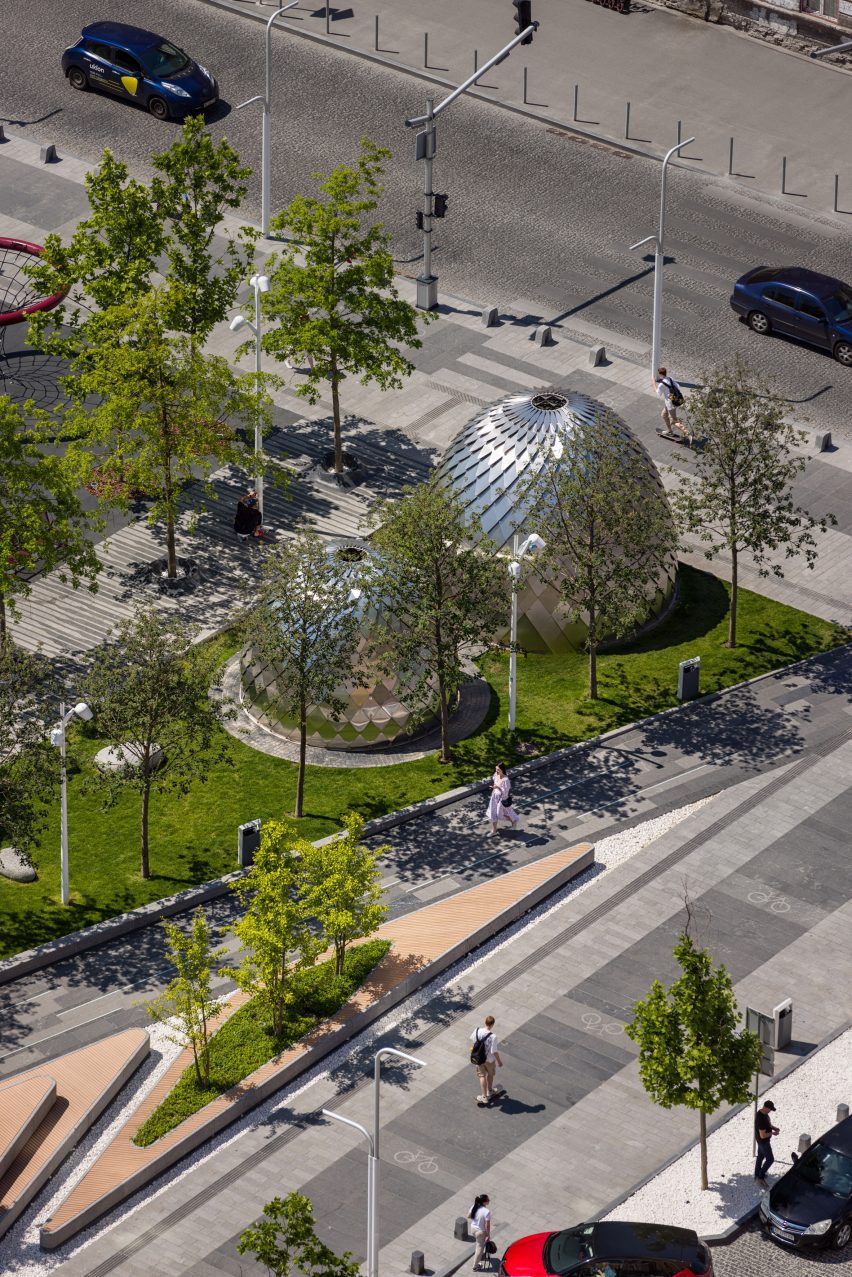
Using the altars of the two former cathedrals at either end of the square as orienting points, Volyk and Donetska created two wide, diagonal paths that create an X-shape dividing the square into segments.
These segments, which are themselves subdivided by polygonal planters wrapped by wooden seating, were each given a distinct function to ensure that the new square caters for a variety of visitors and uses.
These include an area of play equipment with a concrete hill cut through by metal tunnels, a more secluded space with ornamental trees, and a “festival zone” where a wave-like, three-tier seating area is intended for watching larger-scale events.
Public toilets were housed within dome-like structures clad in reflective scales at the eastern entrance to the square, while at the centre of the square an open plaza was organised around a small water feature.
“After the reconstruction, the square is no longer a transit area between attractive locations in the city, but an independent, full-fledged space where people deliberately come to spend time,” explained Donetska.
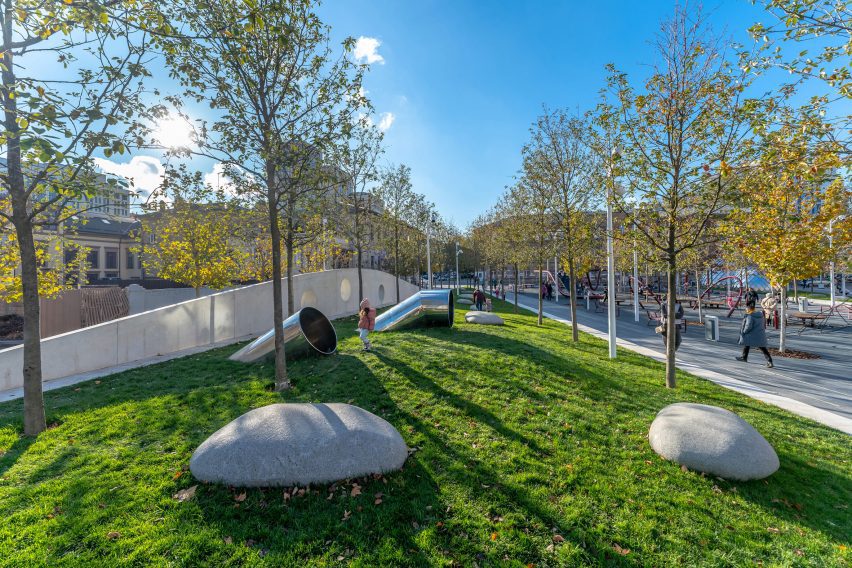
In order to create a “holistic image” for the entire square, the architects were involved in developing almost all of its elements, including the grates that surround tree trunks and a faceted wooden fence that borders a neighbouring school to the south.
The proximity of the Dnipro river informed many of the square’s details, such as the forms of the wooden benches, the scale-like cladding of the bathrooms and a series of colour-changing lighting strips embedded in the pavement of the main pedestrian routes.
As somewhere you pass on your way to the river, the square has a lot of river themes: a large wavy terrace, sharp-edged architectural forms that look like boats, wood in the decoration of surfaces, white pebbles and the effect of water waves in lighting,” described Donetska.
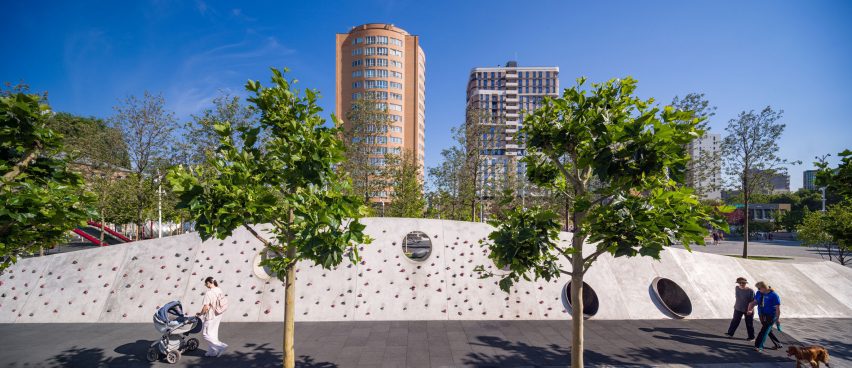
Two years into Russia’s invasion of Ukraine, Dezeen recently asked architects and designers in the country about how they are coping and adapting amid the conflict.
Elsewhere, a disused steelworks was retained and converted into a cultural park in China and a waterfront park that “celebrates material reuse” was completed in San Francisco.
The photography is by Andrey Avdeenko unless otherwise stated.
[ad_2]
Source link

